Socio-economic picture of Western Nghe An today
(Baonghean.vn) - On the morning of August 13, Minister - Chairman of the National Assembly's Committee for Ethnic Minorities Do Van Chien took the floor to answer questions from delegates at the 26th session of the National Assembly Standing Committee. The content focused on issues of policy implementation for ethnic minorities, especially in accessing basic social services, social infrastructure, support for production development, vocational training, job creation; sustainable poverty reduction, improvement... Nghe An Newspaper provided some information reflecting the picture of the mountainous region of Nghe An - where poor ethnic minorities are concentrated.
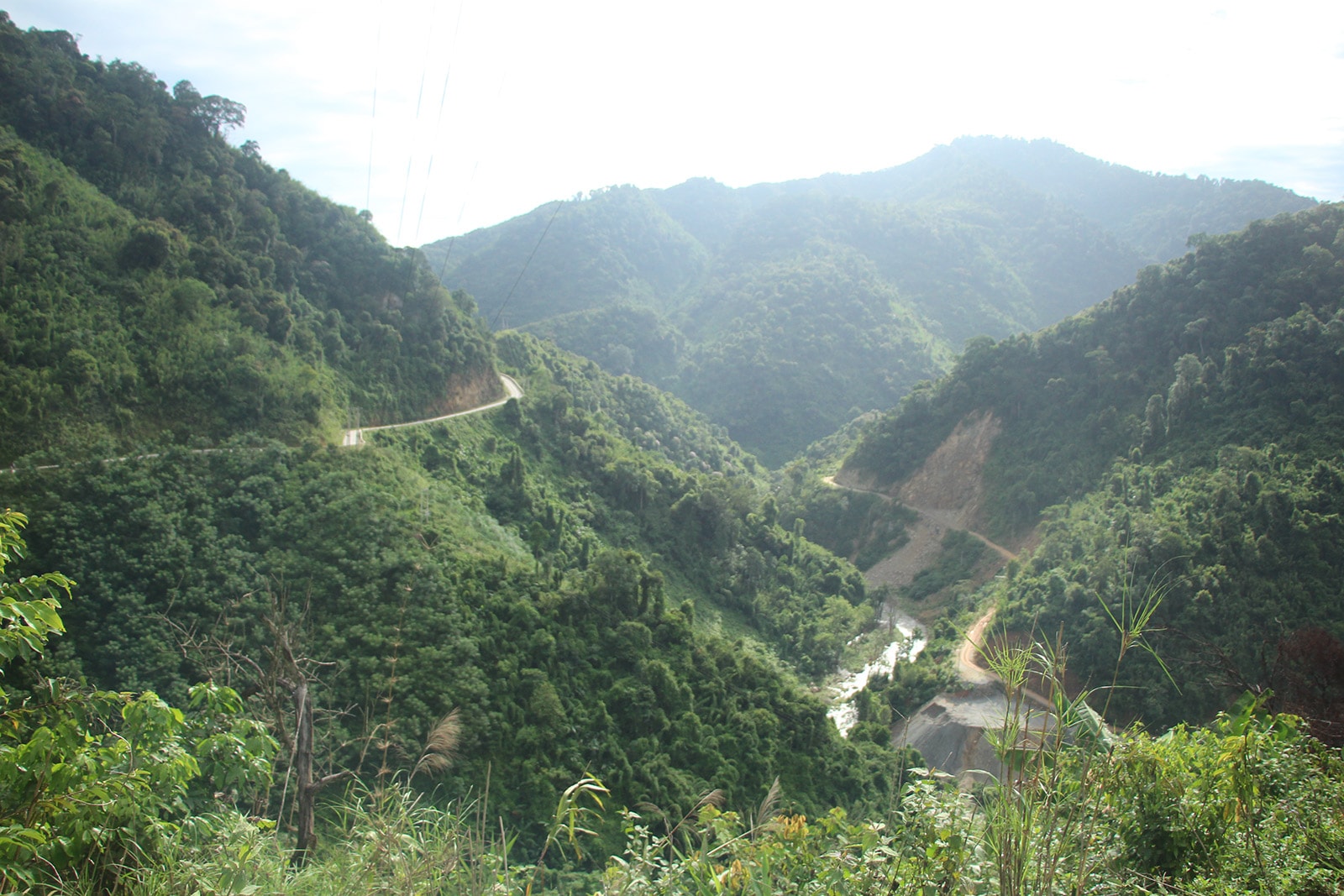 |
| Road to Pha Lom village, Tam Hop commune (Tuong Duong). Photo: Dao Tuan |
Natural features, terrain:
Western Nghe An has a natural area of 13,747.69 km2, accounting for 83.36% of the province's total area. There are 11 mountainous districts and towns, including 5 highland districts and 6 lowland districts and towns.
Ethnic composition: There are 6 ethnic groups living together, including minority communities: Thai, Mong, Kho Mu, Tho, O Du and Dan Lai.
Western Nghe An has 217 communes, wards and towns, 27 border communes with 419 km of border with Lao PDR.
The Western Nghe An region has 3 poor districts that enjoy investment policies according to Resolution 30a of the Government, including: Ky Son, Tuong Duong, Que Phong and Quy Chau district, which has a high rate of poor households and enjoys investment mechanisms according to Decision No. 293 of the Prime Minister (now Decision No. 275/QD-TTg).
There are 99 extremely disadvantaged communes and 184 extremely disadvantaged villages and hamlets in ethnic and mountainous areas eligible for investment under Program 135.
 |
| Khmu village. Photo: Ho Phuong |
Policies and programs for socio-economic development associated with poverty reduction work of the Central Government and the province for Western Nghe An:
+ Some policies of the Central Government:
- Decision No. 2355/QD-TTg dated December 4, 2013 of the Prime Minister.
- Program to support rapid and sustainable poverty reduction for 62 poor districts according to Resolution No. 30a/2008/NQ-CP dated December 27, 2008 of the Government.
- Program 134/CP.
- Program 135/CP.
- Program 1956/QD-TTg of the Prime Minister on Vocational Training for Rural Workers.
- New rural construction program...
 |
| Building new rural roads in Minh Son hamlet, Ky Son commune, Tan Ky district. Photo courtesy |
+ Some policies of Nghe An:
- Decision No. 56/2016/QD-UBND dated September 29, 2016 on a number of mechanisms and policies to support poverty reduction for 44 communes with a poverty rate of 30% or more in addition to Resolution 30a.
- Decision No. 3550/QD-UBND dated August 4, 2017 of the Provincial People's Committee assigned 113 agencies and units to help 108 poor communes in the West.
- Policies to support vocational training, job creation, labor export, agricultural extension, forestry extension, fishery extension,...
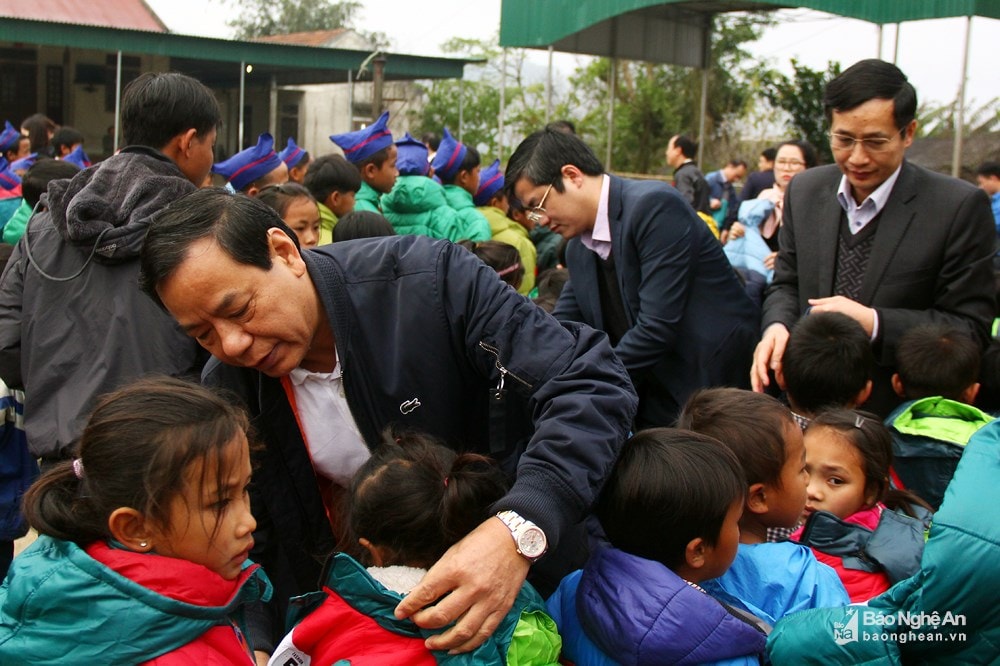 |
| The Department of Transport supports hundreds of warm clothes for students in poor commune Keng Du, Ky Son district. Photo: Document |
Socio-economic limitations of Western Nghe An:
- Poor and near-poor households in the districts and towns of the Western region account for a high proportion compared to the average of the whole province. Poor ethnic minority households account for over 70% of the poor households in the region.
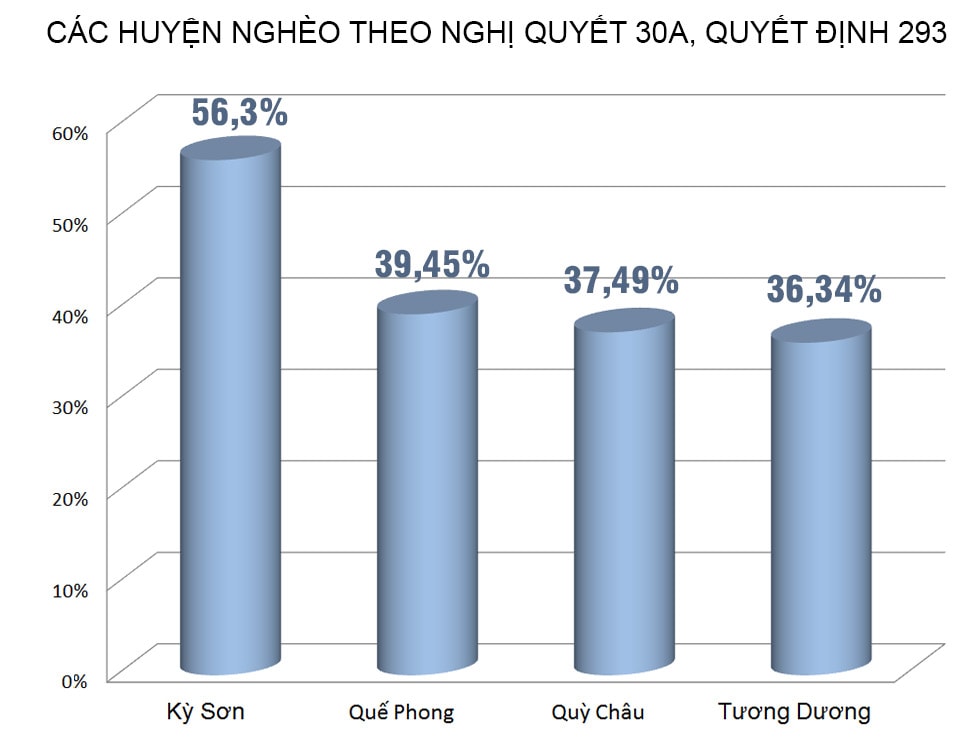 |
+ Average income per capita is equal to 63.3% of the province's average.
+ Essential issues such as housing, residential land, agricultural land, forest land, and domestic water have not been fundamentally resolved.
+ Low level of education, difficult conditions for cultural development, education and health care. The rate of malnourished children is still high.
+ Production and living habits of some ethnic minorities are backward.
+ Social evils are still complicated, especially drug crimes, proselytizing activities, illegal immigration across borders, ...
- Economic growth rate is low, not commensurate with potential.
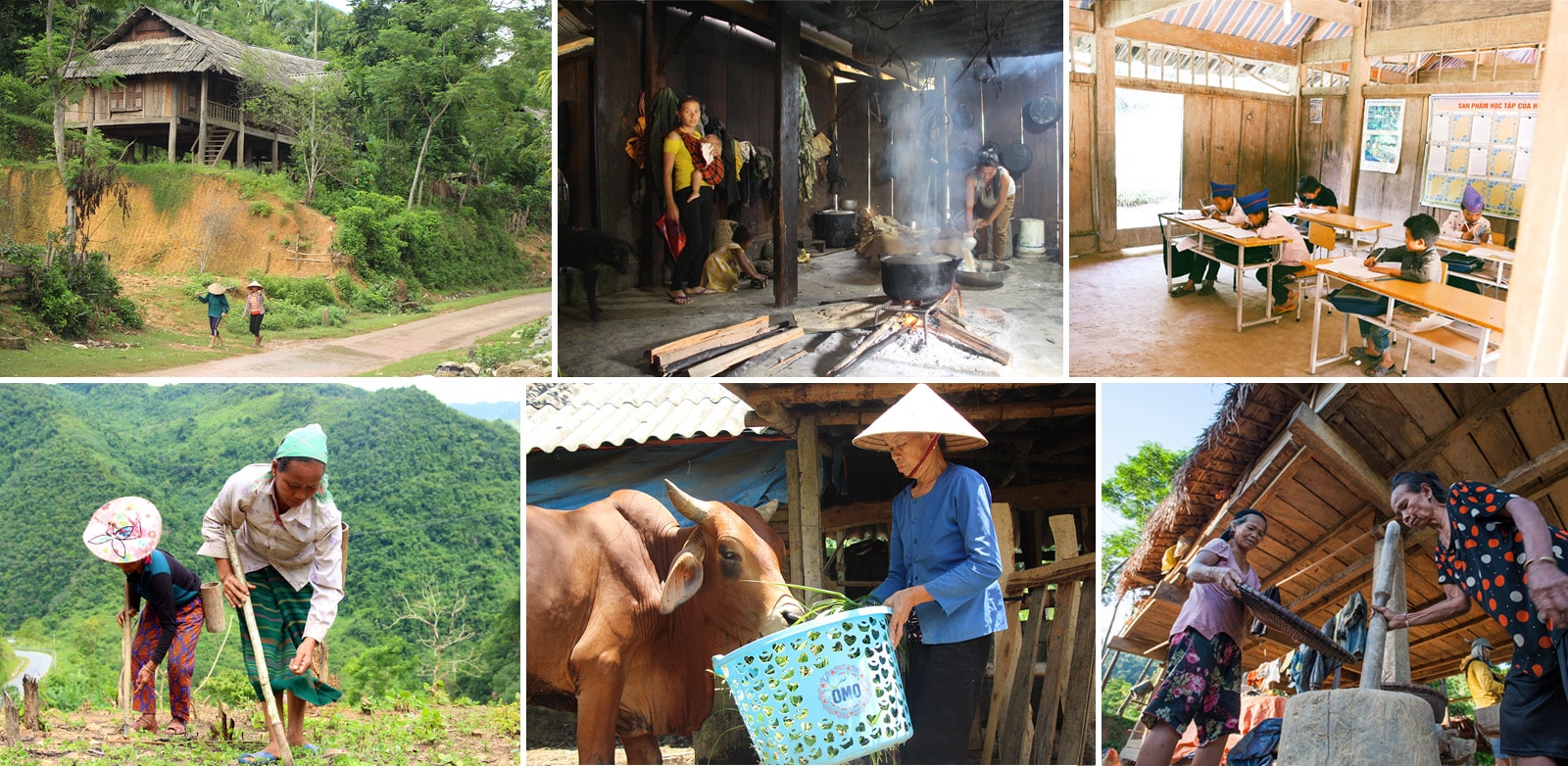 |
| Life of people in Western Nghe An. Photo archive |
Some main reasons:
- The socio-economic development conditions of the Western Nghe An region are that people's income mainly depends on agriculture and forestry; it is affected by difficult farming conditions, inactive irrigation, and low agricultural land area.
- The Western region has complex terrain, the majority of ethnic minorities live here, are used to self-sufficient production practices, and have limited educational level.
- Technical facilities and infrastructure have developed a lot, but still do not meet the requirements of production and people's lives.
- State investment resources are still limited, and some direct support policies do not encourage the poor to strive to improve themselves.
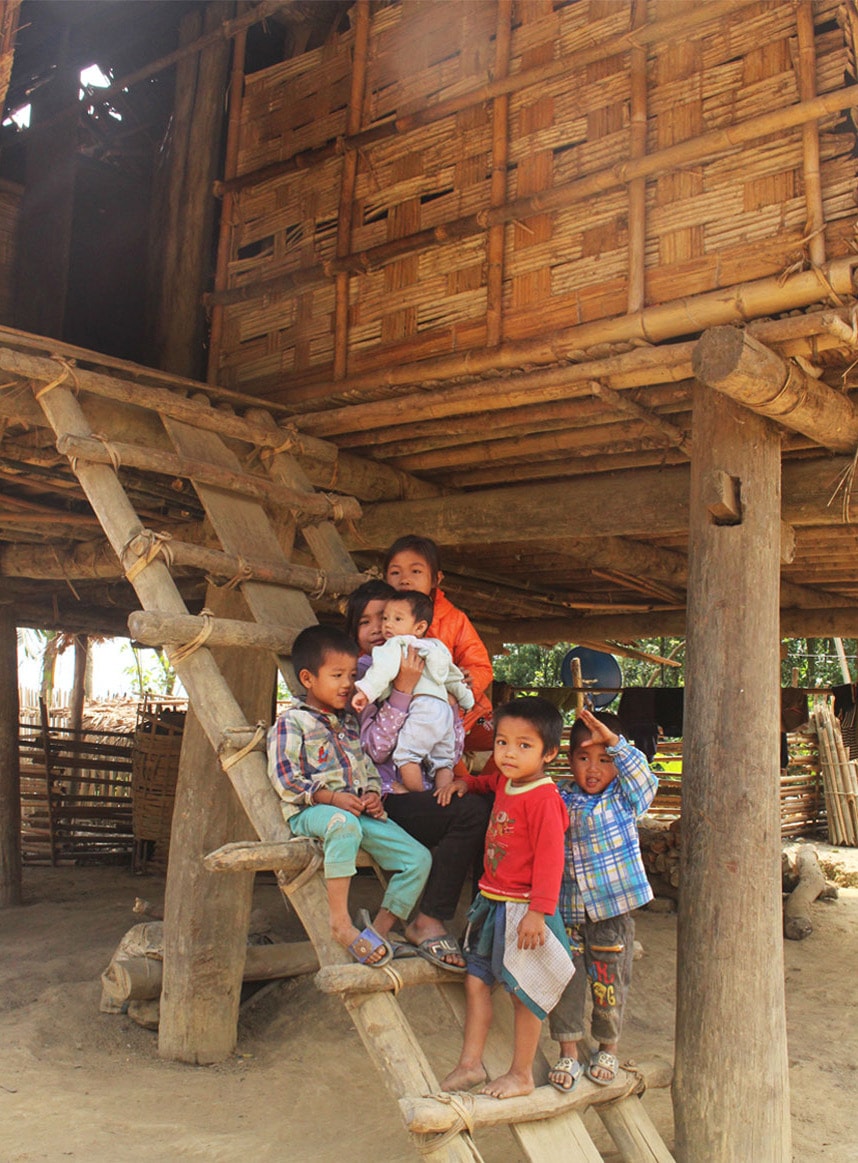 |
| Children of the Dan Lai ethnic group in Bung village, Mon Son commune (Con Cuong). Photo: Dao Tuan |
- People still lack knowledge, lack technical expertise, production is limited, labor productivity is low.
- Most poor households do not know how to calculate how to do business and spend, so they cannot save for reinvestment in production, lacking capital for production and business.
- Poor households have many children, many dependents, and lack of jobs. There are also some people in the households who are lazy and suffer from social evils such as drug addiction, alcoholism, and gambling.
- The arrangement of investment capital sources is still limited, fragmented, scattered, lacking focus and not synchronous, leading to low investment efficiency or slow implementation, even causing waste.
- Poor households still have the mentality of waiting and relying on state support.
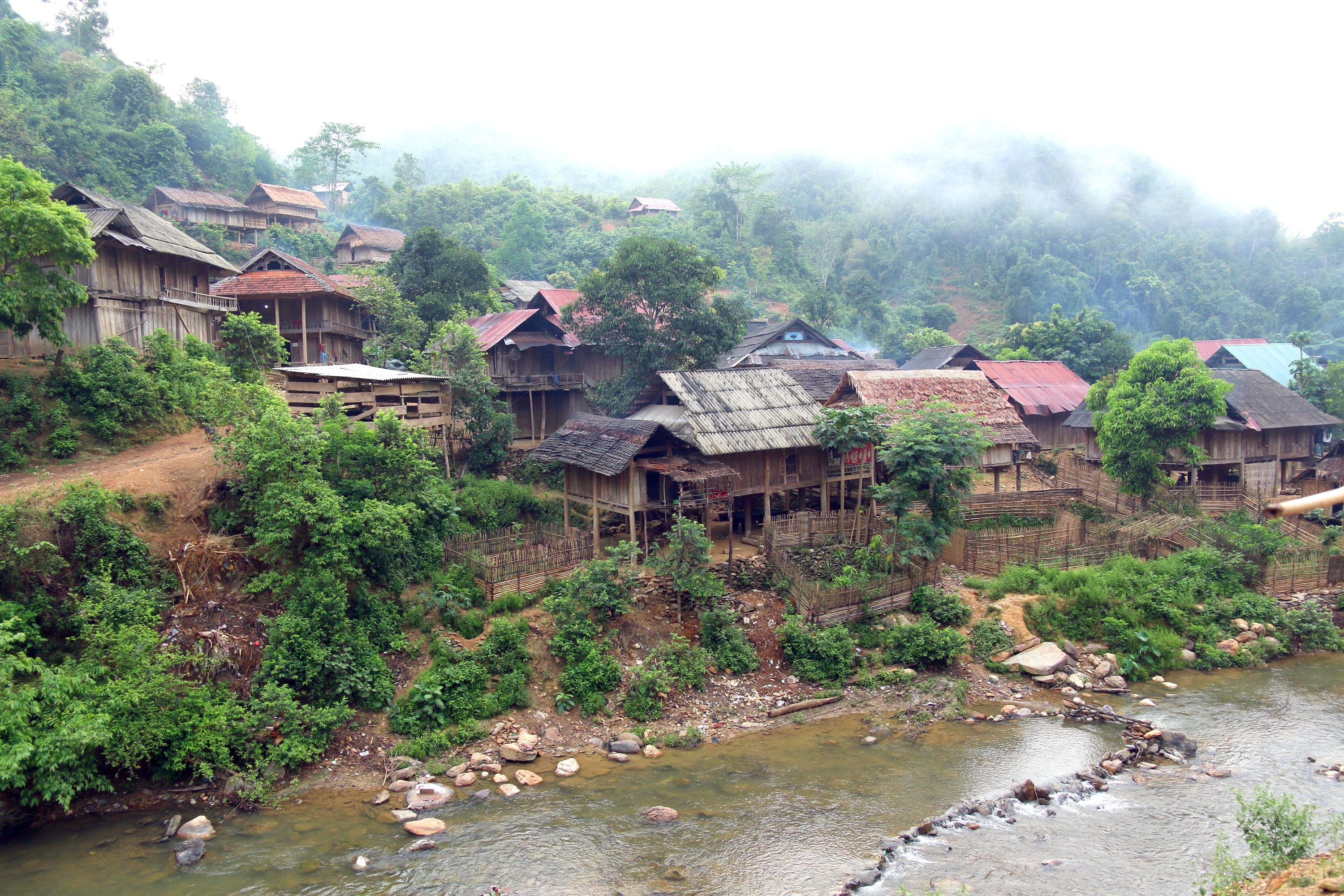 |
| Ca Da village (Bao Thang commune - Ky Son) located along Khe Com stream is considered one of the most difficult villages with 103 households, 490 people, of which poor households account for 66%. People's lives mainly depend on slash-and-burn farming, self-sufficiency. Photo: Dao Tho |
(Source of information: Department of Labor, Invalids and Social Affairs of Nghe An)

.jpg)
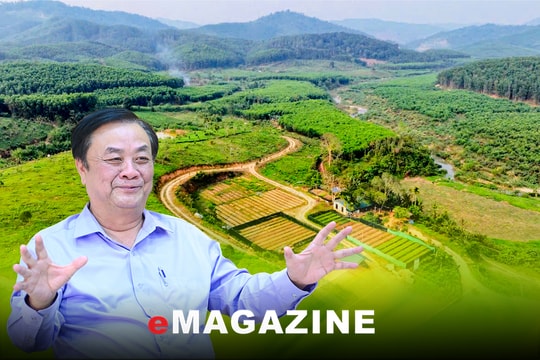
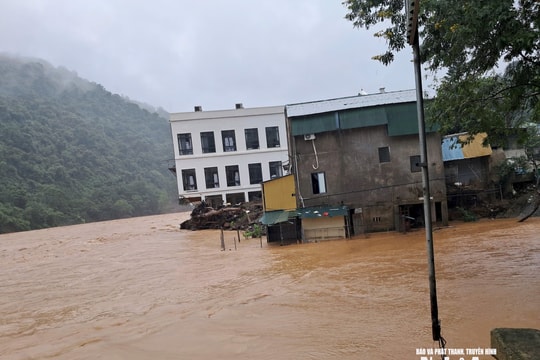
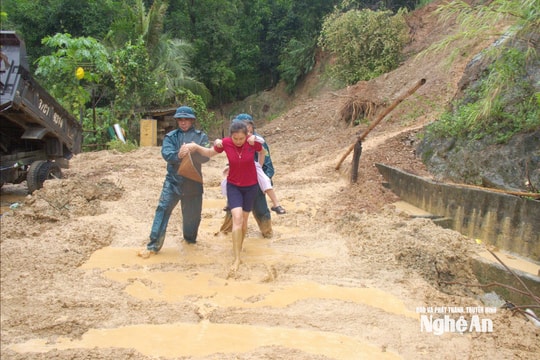
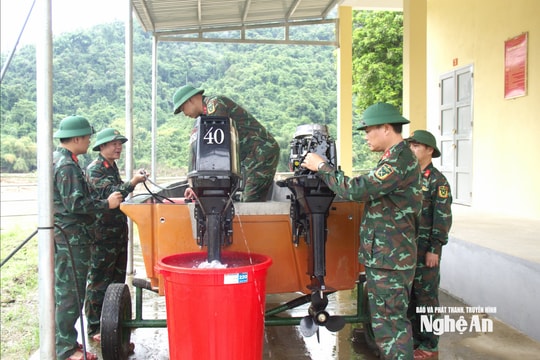
.jpg)
.jpg)
